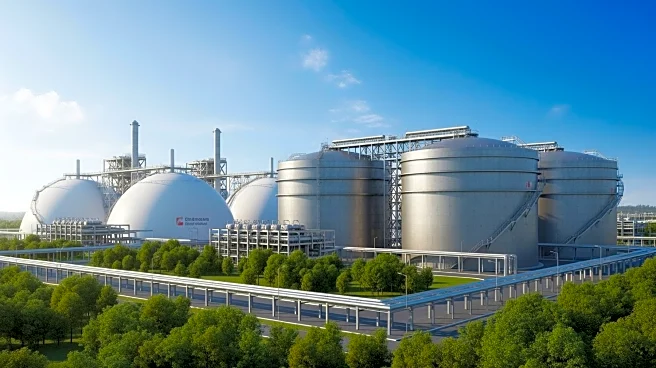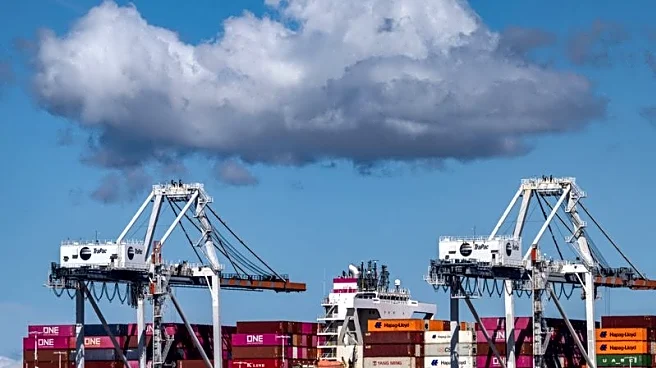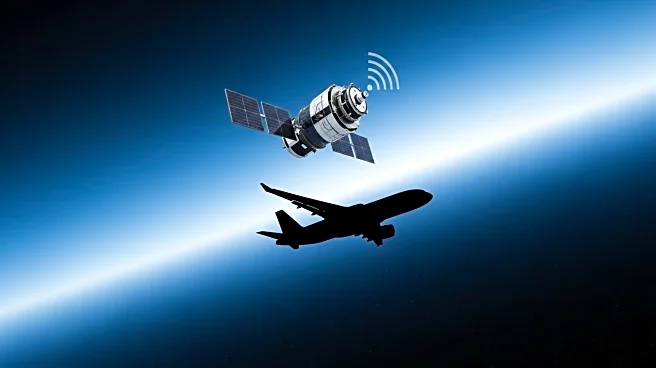What's Happening?
The U.S. Energy Information Administration (EIA) has announced that liquefied natural gas (LNG) exporters in the United States plan to significantly increase the country's liquefaction capacity. By 2029,
the U.S. is expected to add an estimated 13.9 billion cubic feet per day (Bcf/d) to its current capacity, which stands at 15.4 Bcf/d, making it the largest LNG exporter globally. The EIA's forecast, based on its Liquefaction Capacity File and trade press reports, indicates that North America's LNG export capacity will rise from 11.4 Bcf/d at the start of 2024 to 28.7 Bcf/d by 2029, contingent on the completion of projects currently under construction. Additionally, Canada and Mexico are set to contribute to this growth, with plans to add 2.5 Bcf/d and 0.6 Bcf/d, respectively.
Why It's Important?
The projected increase in LNG export capacity is significant for the U.S. energy sector, positioning the country as a dominant player in the global LNG market. This expansion could enhance energy security and economic growth by boosting export revenues and creating jobs in the energy industry. The increase in capacity also aligns with global energy trends, as countries seek cleaner energy sources to reduce carbon emissions. The U.S.'s ability to meet rising global demand for LNG could strengthen its geopolitical influence and trade relationships, particularly with countries transitioning from coal to natural gas.
What's Next?
As the U.S. and North America expand their LNG export capacity, stakeholders will closely monitor the progress of construction projects to ensure timely completion. The industry may face challenges such as regulatory hurdles, environmental concerns, and market fluctuations. However, successful expansion could lead to increased investment in infrastructure and technology, further solidifying the U.S.'s role in the global energy market. Additionally, the growth in LNG exports may prompt discussions on energy policy and environmental impact, influencing future legislative and regulatory decisions.
Beyond the Headlines
The expansion of LNG export capacity raises questions about the environmental impact of increased natural gas production and transportation. While LNG is considered a cleaner alternative to coal, its production and export involve significant energy consumption and potential methane emissions. The industry must address these concerns through technological advancements and regulatory compliance to ensure sustainable growth. Furthermore, the geopolitical implications of increased U.S. LNG exports could affect international relations, as energy dependency shifts and new alliances form.













